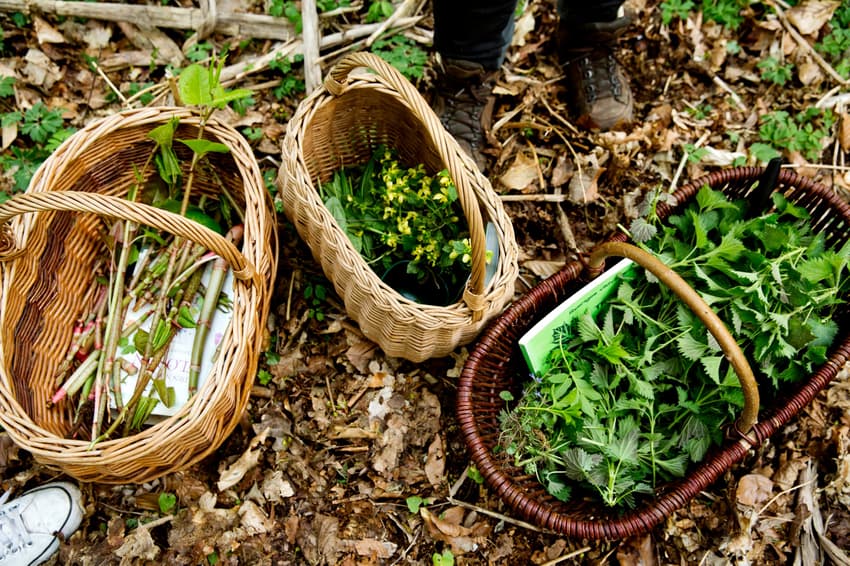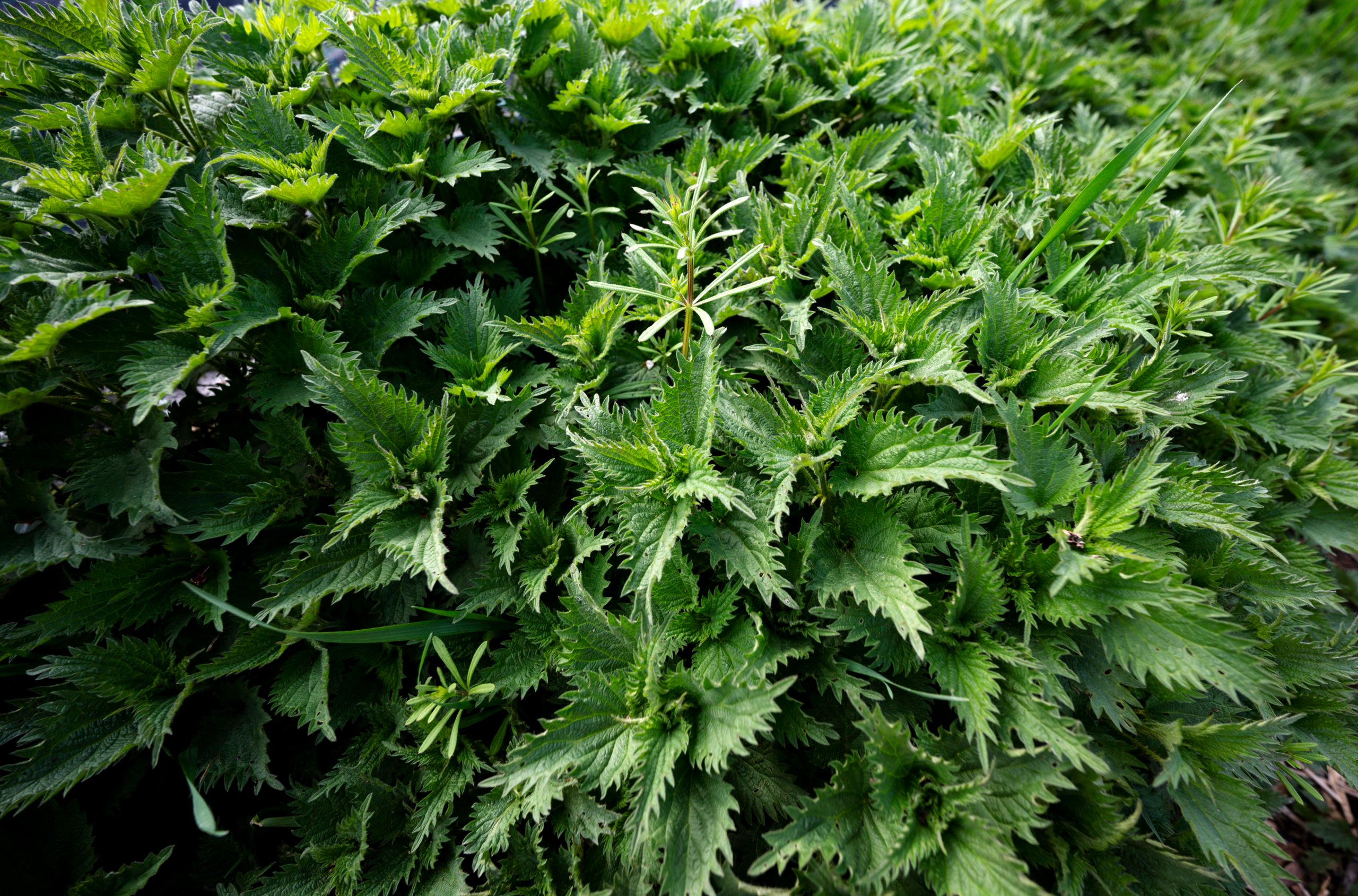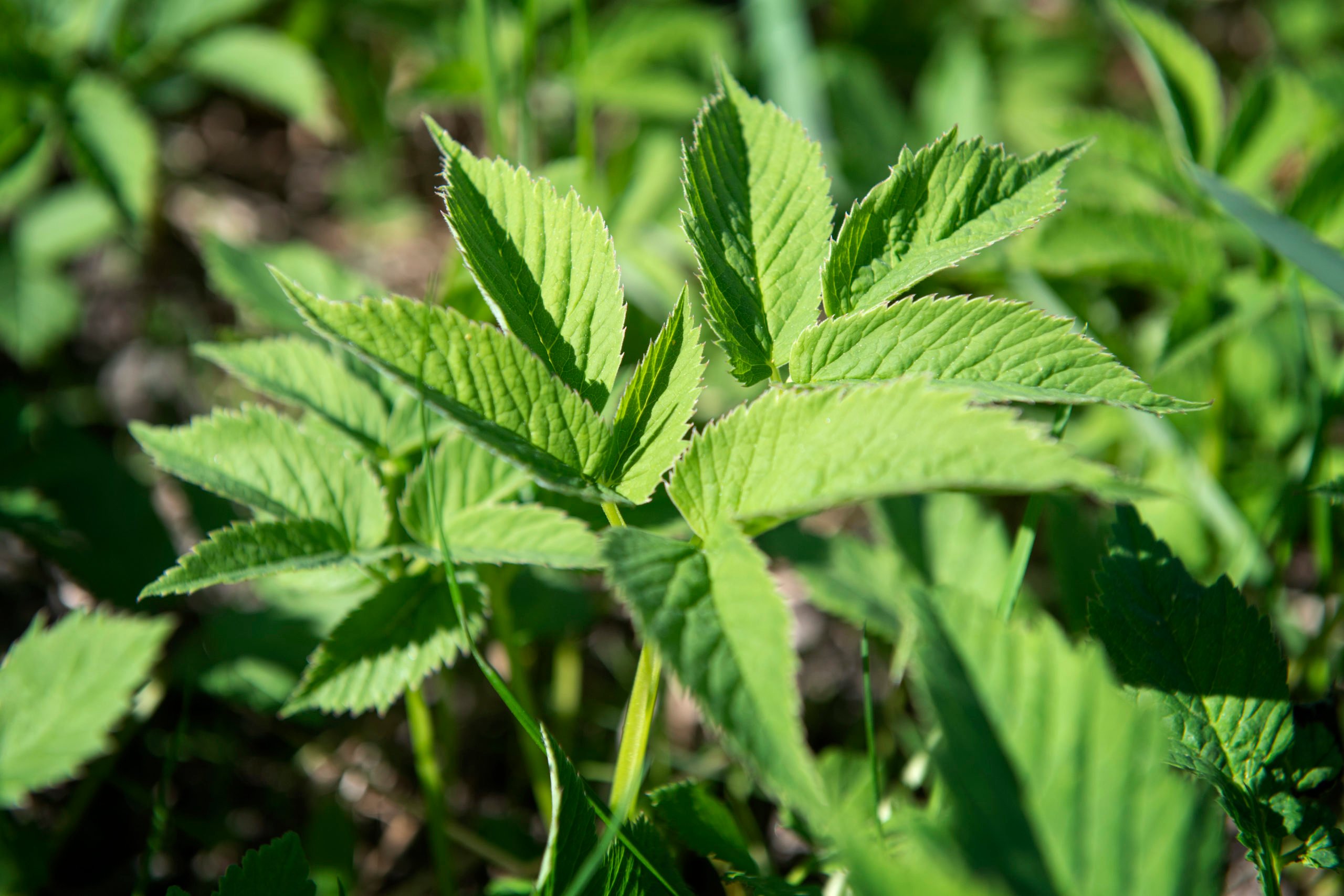The three tasty treats that make spring in Sweden a forager's dream

As large parts of Sweden finally emerge out of winter into spring, there will soon be a wide range of produce on offer in the Swedish countryside, if you know where to look.
You might already have your go-to svampställe where you forage mushrooms in autumn, but mushrooms aren't the only thing you can forage in Sweden.
Obviously, all of the plants in this guide grow in the wild, meaning it's a good idea to wash them thoroughly before you use them. You should also be respectful of nature and of other would-be foragers when you're out foraging, and make sure not to take more than your fair share to ensure there's enough for everyone.
As with all foraged foods, only pick and eat what you know. Most of the plants in this guide do not look similar to any poisonous plants, but it's always better to be safe than sorry – or ask someone who knows for help.
Additionally, avoid foraging plants close to the roadside or in other areas which could be more polluted. If you haven't tried any of these plants before, start in small doses to make sure you don't react negatively to them.
Wild garlic plants in a park in Alnarpsparken, Skåne. Photo: Johan Nilsson/TT
Wild garlic
These pungent green leaves are found in shady wooded areas, and will usually start popping up near Easter, staying around until June in some areas. Wild garlic or ramsons, known as ramslök in Swedish, smell strongly of garlic and have wide, flat, pointed leaves which grow low to the ground.
If the plant does not smell strongly of garlic, don't eat it, as it could be lily of the valley instead, which is poisonous.
The whole ramslök plant is edible: leaves, flowers and the bulbs underground – although try not to harvest the bulbs or the plants won't grow back next year.
The leaves have a very strong garlic taste which gets weaker once cooked. Common recipes for wild garlic include pesto and herb butter or herb oil, but it can generally be used instead of traditional garlic in most recipes. If you're cooking wild garlic, add it to the dish at the last possible moment so it still retains some flavour.
You can also preserve the flower buds and seed capsules later in the season as wild garlic capers, known as ramslökskapris in Swedish, which will then keep for up to a year.
Stinging nettles. Wear gloves when harvesting these to protect yourself from their needles. Photo: Johan Nilsson/TT
Stinging nettles
Brännässlor or stinging nettles need to be cooked before eating to remove their sting, although blanching them for a couple of seconds in boiling water should do the trick. For the same reason, make sure you wear good gardening gloves when you pick them so you don't get stung.
Nettles often grow in the same conditions as wild garlic – shady woodlands – and are often regarded as weeds.
The younger leaves are best – they can get stringy and tough as they get older.
A very traditional use for brännässlor in Sweden is nässelsoppa, a bright green soup made from blanched nettles, often topped with a boiled or poached egg.
Some Swedes may also remember eating stuvade nässlor with salmon around Easter, where the nettles are cooked with cream, butter and milk. If you can't get hold of nettles, they can be replaced with spinach for a similar result.
You can also dry nettles and use them to make tea, or use blanched nettles to make nettle pesto.
Kirskål or ground elder, another popular foraged green for this time of year.
Photo: Jessica Gow/TT
Ground elder
Ground elder is known as kirskål in Swedish, and can be used much in the same way as spinach. It also grows in shady areas, and is an invasive species, meaning that you shouldn't be too worried about foraging too much of it (you might even find some in your garden!).
It is quite common in parks and old gardens, but can also be found in wooded areas. The stems and older leaves can be bitter, so try to focus on foraging the tender, younger leaves.
Ground elder has been cultivated in Sweden since at least 500BC, and has been historically used as a medicinal herb and as a vegetable. This is one of the reasons it can be found in old gardens near Swedish castles or country homes, as it was originally cultivated for use in cooking.
Kirskål is available from March to September, although it is best eaten earlier in the season.
As mentioned, ground elder can replace spinach in many recipes – you could also use it for pesto, in a quiche or salad, or to make ground elder soup.
Comments
See Also
You might already have your go-to svampställe where you forage mushrooms in autumn, but mushrooms aren't the only thing you can forage in Sweden.
Obviously, all of the plants in this guide grow in the wild, meaning it's a good idea to wash them thoroughly before you use them. You should also be respectful of nature and of other would-be foragers when you're out foraging, and make sure not to take more than your fair share to ensure there's enough for everyone.
As with all foraged foods, only pick and eat what you know. Most of the plants in this guide do not look similar to any poisonous plants, but it's always better to be safe than sorry – or ask someone who knows for help.
Additionally, avoid foraging plants close to the roadside or in other areas which could be more polluted. If you haven't tried any of these plants before, start in small doses to make sure you don't react negatively to them.
Wild garlic
These pungent green leaves are found in shady wooded areas, and will usually start popping up near Easter, staying around until June in some areas. Wild garlic or ramsons, known as ramslök in Swedish, smell strongly of garlic and have wide, flat, pointed leaves which grow low to the ground.
If the plant does not smell strongly of garlic, don't eat it, as it could be lily of the valley instead, which is poisonous.
The whole ramslök plant is edible: leaves, flowers and the bulbs underground – although try not to harvest the bulbs or the plants won't grow back next year.
The leaves have a very strong garlic taste which gets weaker once cooked. Common recipes for wild garlic include pesto and herb butter or herb oil, but it can generally be used instead of traditional garlic in most recipes. If you're cooking wild garlic, add it to the dish at the last possible moment so it still retains some flavour.
You can also preserve the flower buds and seed capsules later in the season as wild garlic capers, known as ramslökskapris in Swedish, which will then keep for up to a year.
Stinging nettles
Brännässlor or stinging nettles need to be cooked before eating to remove their sting, although blanching them for a couple of seconds in boiling water should do the trick. For the same reason, make sure you wear good gardening gloves when you pick them so you don't get stung.
Nettles often grow in the same conditions as wild garlic – shady woodlands – and are often regarded as weeds.
The younger leaves are best – they can get stringy and tough as they get older.
A very traditional use for brännässlor in Sweden is nässelsoppa, a bright green soup made from blanched nettles, often topped with a boiled or poached egg.
Some Swedes may also remember eating stuvade nässlor with salmon around Easter, where the nettles are cooked with cream, butter and milk. If you can't get hold of nettles, they can be replaced with spinach for a similar result.
You can also dry nettles and use them to make tea, or use blanched nettles to make nettle pesto.
Photo: Jessica Gow/TT
Ground elder
Ground elder is known as kirskål in Swedish, and can be used much in the same way as spinach. It also grows in shady areas, and is an invasive species, meaning that you shouldn't be too worried about foraging too much of it (you might even find some in your garden!).
It is quite common in parks and old gardens, but can also be found in wooded areas. The stems and older leaves can be bitter, so try to focus on foraging the tender, younger leaves.
Ground elder has been cultivated in Sweden since at least 500BC, and has been historically used as a medicinal herb and as a vegetable. This is one of the reasons it can be found in old gardens near Swedish castles or country homes, as it was originally cultivated for use in cooking.
Kirskål is available from March to September, although it is best eaten earlier in the season.
As mentioned, ground elder can replace spinach in many recipes – you could also use it for pesto, in a quiche or salad, or to make ground elder soup.



Join the conversation in our comments section below. Share your own views and experience and if you have a question or suggestion for our journalists then email us at [email protected].
Please keep comments civil, constructive and on topic – and make sure to read our terms of use before getting involved.
Please log in here to leave a comment.